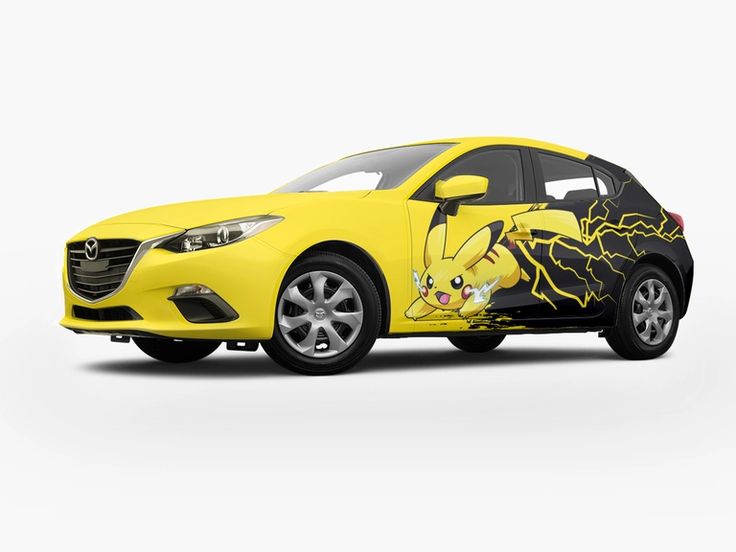Design as a Tool for Visual Impact
Attractive design is the cornerstone of any successful car sticker. Strong visual impact doesn’t necessarily require complex graphics or ornate elements; it relies on balancing simplicity with distinction. As a car passes on the street, observers have only moments to notice its visual content. Therefore, the design must be clear, eye-catching, and direct in conveying its message. Here, colors, sizes, and typography play a decisive role in capturing attention and keeping the sticker memorable.
Colors and Their Psychological Impact on Viewers
Color selection in car sticker design is never arbitrary. Colors express emotions and convey implicit messages that influence the viewer. Bold gradients or contrasting colors can create a sense of vitality and movement, while calm colors lend an air of elegance or professionalism. It’s essential to ensure color harmony between the sticker and the car’s body to avoid visual clutter or a sense of chaos. Natural lighting and color reflection at different times of day should also be considered.
Typography: Between Clarity and Innovation
Text on a car sticker must be clear and legible from a distance. While innovative fonts may be appealing, excessive ornamentation can hinder message comprehension or lead to it being ignored. Opt for fonts with appropriate weight, considering font size and proportional space within the overall design. The more harmonious the font is with the design style and clearly visible, the more effective it will be at attracting attention. Text should be prioritized: key messages at the top, secondary details at the bottom or in corners.
Visual Balance in Element Distribution
A common mistake in car sticker design is overcrowding with distracting elements. Visual balance is the secret to combining attractiveness with simplicity. This balance is achieved through deliberate distribution of images, text, and colors, allowing the eye to move comfortably across the design. There should be a clear focal point to draw attention, supported by elements that reinforce the message and complete the overall meaning. Smart use of negative space also highlights key elements and lends a more professional touch.
Strategic Placement of the Sticker on the Car
Choosing the right location for the sticker significantly affects its effectiveness. The ideal position varies based on car type, dimensions, and the sticker’s purpose. Some areas are more visible when stationary, while others stand out during driving. The sticker design must align with the surface’s contours and curves. The most prominent positions should contain the most critical messages or elements, with additional details placed in less visible areas.
Dynamism and Visual Movement in Design
A car sticker design shouldn’t be visually static; it’s better to include elements suggesting movement and dynamism. This doesn’t require animated images or wavy lines but can be achieved through design directions, element arrangement, or visual effects that convey vitality. This helps capture attention faster, especially when the car is moving on streets or highways, where viewing time is extremely brief.
Personal Character and Visual Identity
A successful sticker must reflect a unique character and distinctive visual identity. Whether representing a business or a personal goal, the design should align with the intended mental image. Visual identity comprises colors, fonts, overall shape, and even the tone of written messages. The design must harmonize with the owner’s personality or brand identity (if part of a campaign). Distinction doesn’t mean exaggeration but creating an easily recognizable signature.
Durability and Print Quality
A sticker should be designed not only for beauty but also for durability against external conditions like heat, rain, or friction. Print quality plays a major role in preserving the sticker’s colors and clarity long-term. Consider the material used (e.g., vinyl) and its adhesion to the car’s surface without leaving residue upon removal. Attractive design is incomplete without professional execution ensuring the sticker remains in optimal condition for as long as possible.
Design from the Target Audience’s Perspective
Before designing, consider the target audience: Who will see this sticker? What message do we want to convey? This approach enables more precise design decisions. For example, a younger audience may be drawn to bold colors and modern styles, while a general audience might prefer calmer, more organized designs. Defining the audience doesn’t limit creativity but guides it to maximize impact.
Simplicity is the Key to Attractiveness
Though attractive design may suggest complexity, simplicity remains fundamental to capturing genuine attention. A simple, organized design allows the eye to quickly and effectively grasp content without feeling overwhelmed. Using a limited color palette, clear fonts, and logical element arrangement gives the design a professional and comfortable appearance. Simplicity doesn’t mean boredom but focusing on the core message without visual noise.
Importance of Testing the Design Before Execution
It’s useful to show the final design to a group before printing and applying it. This can reveal overlooked details like insufficient contrast or readability issues from a distance. Testing the design on images resembling the actual car is also recommended to assess its real-world appearance. This simple step saves time and costs later, leading to a more refined result.
Continuity and Harmony with Overall Visual Identity
If the sticker is part of a marketing campaign, it should align with the broader visual identity of other materials. This harmony strengthens brand presence and reinforces it in the audience’s mind. Repeating visual elements like colors, logos, or patterns conveys professionalism and reliability. For personal use, maintaining a consistent design style across all stickers gives the car a cohesive, organized look.
Conclusion
Successful car sticker design relies not just on artistic taste but on a deliberate process requiring deep understanding of visual, psychological, and technical elements. Every design decision—from color choice to font selection—must serve a clear purpose and aesthetic vision. Whether commercial or personal, compelling design starts with an idea and is precisely translated into a tangible form that captures attention and communicates effectively. In a fast-moving world like roads and streets, there’s no longer than a moment to make an impact—so make every detail count.









